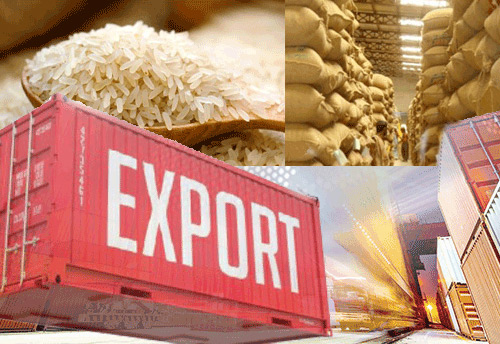
India may corner nearly half of Global Rice trade as exports soar to record

NEW DELHI : India has emerged as a major global player in rice export during the past 20 months. Part of its credit goes to the Covid-19 pandemic, because of which other major rice exporting countries failed to meet world demand, as India took the opportunity to export more rice worldwide.
The steep growth of the rice exports can be attributed to the fact that India’s exports during fiscal year 2021 ended March 31 registered a 112 per cent increase – the highest ever growth since India started exporting rice.
The situation is equally encouraging for fiscal year 2022 – from April 1, 2021 to March 31, 2022 – where rice exports logged a 72 per cent rise in the first four months against the corresponding period last year.
If rice exporters are to be believed, India could have exported much more than the current figure, had there not been an acute shortage of containers, and rice in ocean and inland freight.
The exponential rise in export is despite the fact that Indian exporters had to face a series of hurdles including steep rice in container freight, transport freight and other handling charges due to the Covid-19 pandemic, admitted All India Rice Exporters Association executive director Vinod Kaul.
“If we talk of 2020-21, India exported 13 million metric tonnes [mmt] non-basmati rice and around 4.5mmt basmati rice – which comes to around 17.5mmt rice. It is more than 37 per cent of the total world export [47 MMT],” he said.
There are mainly four major rice exporting countries, India, Thailand, Vietnam and Pakistan. In the last fiscal year, India’s rice exports were more than the cumulative exports of the other three major exporting countries – Thailand, Vietnam and Pakistan.
India has performed exceptionally well during the adverse situation caused by the Covid-19 crisis. “The workers were rarely available, containers were hardly available, the inland ocean freight almost doubled in some cases. Still, we made it happen,” said one rice exporter.
Thailand and Vietnam have an additional advantage, their rice-producing areas are near to the sea, so inland freight is almost negligible.
In India, however, rice-producing states, mainly Punjab, Haryana, western Uttar Pradesh and part of Jammu, all are far away from major ports. “This resulted in heavy inland costs, and we became less competitive price-wise,” Kaul said.
Another issue is that some of the rice exporting countries like Bangladesh and China have become importing countries due to low production, trends that have further aggravated demand for the staple in the international market.

